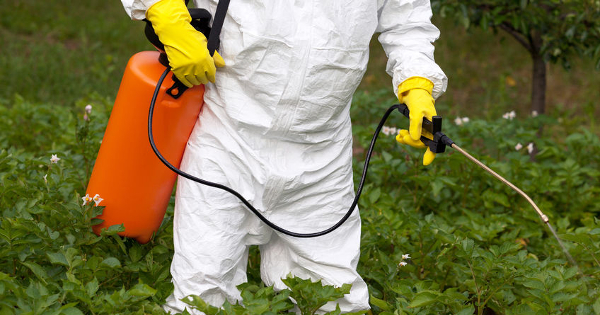 By: GreenMedInfo Research Group January 15th 2018
By: GreenMedInfo Research Group January 15th 2018Few would argue that consuming ample quantities of fruits and vegetables in the diet is a good idea, right? Fresh produce may be the only food on the planet that all diet gurus agree on, but did you know that you may be getting a chemically-applied dose of a known carcinogen every time you eat a piece of “fresh” fruit?
If you have been eating lots of produce as part of a healthy diet, it may shock you to learn that more than forty countries, including the United States, have promoted the use of a genotoxic, carcinogenic “freshness preserver,” applied to extend the shelf-life of fruits and vegetables. And despite vehement denials of any danger to the public, health concerns regarding the expanding use of this substance continue to mount.
Sold by U.S.-based company AgroFresh Solutions, Inc. under three different trade names, this patented preservation process applies a synthetic pesticide to fruit before it has ripened. The active ingredient in the pesticide, 1-methylcyclopropene (1-MCP), retards ripening by blocking ethylene receptors in the fruit from receiving the phytohormone ethylene – the plant’s chemical cue to ripen.[1] The trade names under which this rapidly expanding practice are operating are SmartFresh™ Technology, which is applied to produce post-harvest; Harvista™, applied to apple and pear orchards; and RipeLock™, applied to bananas after picking to retard ripening. Once applied, 1-MCP can retard ripening for up to one year.[2]
Per the manufacturer, SmartFresh technology is sold as a way to “reduce fruit waste” (marketing-speak for “increase profits”) and “maintain texture, firmness, taste and appearance of fruits by warding off negative ethylene effects.” In short, applying 1-MCP allows produce distributors to keep fruits and vegetables in storage much longer after harvest, while maintaining a fresh-looking and -tasting product to sell. Heralded as a breakthrough technology, it preserves profits for growers by allowing them to sell in-demand produce varieties during off-seasons.
Why it Matters
Marketed as “non-toxic”, the manufacturer states that SmartFresh “poses no risk to humans, animals or the environment, when used as recommended.” This marketing campaign has been very effective. Perceived as being low-risk to consumers, SmartFresh is approved for use on apples, pears, persimmons, plums, cherimoyas, kiwis, tomatoes, peaches, melons, mangoes, limes, and avocados, with more uses planned.[3] It is interesting to note that a “non-toxic” substance that “poses no risk to humans” is accompanied by safe handling instructions that specify anyone involved in application of the chemical “Wear long-sleeved shirt, long pants, shoes, socks, chemical-resistant gloves and safety glasses or goggles” while handling.[4] Nothing screams “safety” like a hazmat suit! Image credit: http://agrofresh.octochemstore.com/wp-content/uploads/2015/02/ProTabs_Pink_Use-Recommendations.pdf
The commercial implications of preserving the saleability of a produce harvest for an entire year are so significant, use of these technologies has spread across agricultural nations like a wildfire. 1-MCP has even penetrated the organic standards of several countries, with legislation knocking on the door of organic farming in the U.S. As of this writing, it is not allowable under the United States’ National Organic Program, however in mid-2016, a change was proposed to organic standards that would allow SmartFresh to be applied to tree fruits. The outcome of this proposal has not yet been announced.
With treated fruits lasting up to three times longer than non-treated fruits, the economic incentive is obvious. Organic standards are currently the only safeguard in place
to protect consumers from unknowingly ingesting toxic herbicides and pesticides. Organic standards should also strive to represent more localized, sustainable, and environmentally conscious agricultural practices. Are the organic standards in the United States strong enough to protect the public from the aggressive lobbying being done on behalf of these economic interests?
Read the entire article here: http://www.greenmedinfo.com/blog/hidden-biopesticide-your-produce This article is copyrighted by GreenMedInfo LLC, 2018
